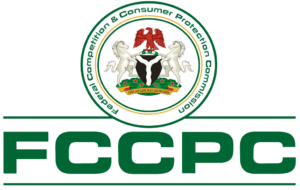Dynamic Practice Development
Author: Kim Tasso
Publisher: Thorogood
Reviewer: Goke Ilesanmi
Kim Tasso, the author of this text entitled, “Dynamic Practice Development” with the subtitle “Selling Skills and Techniques for the Professions”, is an independent consultant. Tasso was the first Director of Marketing at Nabarro Nathanson between 1989 and 1993. Before that, she had been the first Marketing Manager at Deloitte Consulting.
According to this author, if you are one of the many professionals who hate selling themselves and their firm’s services, but recognise you have little option, this text has been written for you.
Tasso stresses that there are many texts on marketing for the professions and even more on selling skills in general, but there has never been anything on selling for the professions until now. She says this text is a truly expert guide to selling and account management specifically designed for all professional firms and advisers.
Structurally, the text contains nine chapters. Chapter one constitutes the introduction. According to Tasso here, “A visit to any local or virtual bookstore will reveal a treasury of books on selling and account management- so why another? Well, a number of reasons. The first is because my target audience…rarely feel comfortable reading something that does not address their specific situation…. Second, rather than attempt to teach selling in a book my aim is to provide a review of as many different ideas and frameworks of selling as possible…. Hopefully, this will save professionals much time…in identifying the ideas and frameworks most likely to be of value to them.”
This Author says the third reason is that the professions are responsible for a huge chunk of the economy, while the fourth is that most of the professions deal in long-term client relationships.
“This means that there must be a natural linkage and balance between developing their reputation and understanding their markets…, winning new business…and developing business from existing clients …which often comprises over 80per cent of a professional firms’ annual income. Although many of the techniques and skills are the same, there are differences in how they are applied in new or existing client situations and many professionals feel much more comfortable with existing client relationships,” adds Tasso.
This Author stresses that her final reason for writing this text is that she firmly believes that selling is relatively easy to those people who have the integrity to act in a professional manner and who are genuinely interested in helping clients by providing solutions to their problems.
Chapter two is entitled “Marketing planning.” She says, “One of the keys to successful marketing is having a sound marketing plan at the outset. The marketing plan entails a careful analysis of your current internal strengths and the external market… so that you can develop the right awareness in that market so that your subsequent sales efforts are received favourably.”
Tasso educates that marketing operates at three different levels. “First, there is a marketing function…second, marketing is a philosophy that focuses — at every point in the firm — on the needs of the client…. Third, marketing is a series of tools and techniques …designed to do different marketing tasks…,” illuminates this author.
According to Tasso on selling, “When you move from communicating with a market to communicating with a particular organisation or individual you have moved into selling phase. Here the focus is on the specific needs of that one organisation or individual rather than the generalised needs of the whole market. Some argue that selling is ore orientated to ‘pushing’ the product or service you want to sell although most successful selling is driven by the needs of the buyer. Typically, in a professional firm, selling is the preserve of the most senior fee-earners – they have the experience and knowledge to promote their own and the firm’s benefits.”
She says converting a prospect through successful selling results in a client. “However, one set of instructions does not a client make. The continued marketing and selling to that client… ensures further instructions are received for additional or new services. This is a vital activity in every professional firm as usually around 80 per cent of a firm’s annual income is from existing clients,” Tasso adds.
In chapters three to five, this author analytically X-rays concepts such as what marketing is, adoption of the buyer’s point of view, and selling frameworks and models.
Chapter six is based on the subject matter of selling skills. According to Tasso, “Many professionals complain that they are not good at selling but when I ask them to substantiate their ‘failures’ they tell me what they set out to achieve. It is a bit like deciding to do some law, or accountancy, or surveying without knowing why or for whom! If you want to know whether you are successful in marketing or selling you will need something against which to measure yourself. Therefore, you need some objectives and they should be Specific, Measurable, Achievable, Realistic and Time specific (SMART).”
This Author adds that if you are more experienced at selling, then set some goals that will move you forward. “If you are currently winning around 25per cent of your competitive tenders, then set a new target for winning 50per cent by a specific date. If you are good at getting in the door, but not so good at being asked to present proposals, then set objectives at increasing your hit rate. Once you have set some objectives you must ensure that the relevant information and monitoring systems exist…so that you can keep track of your progress and take action if your strategies and approaches are not generating the expected results.”
In chapters seven to nine, Tasso discusses the concepts of competitive tendering; account management, and firm-wide selling issues.
Conceptually, this text has depth. Inclusion of the Roadmap segment at the beginning of each chapter to summarily radiate the major messagestylistically enhances the success. This style is also reinforced by quotes from experts. Tasso’s use of language is commendable, especially that it aids readers’ understanding. What’s more, this author uses graphics and tabulation to achieve visual reinforcement of readers’ understanding. He also employs acrostics for structural decomposition and conceptual amplification. However, errors of wrong structural usage of involuntary-action verbs such as Understand (page one, line 11), Know (page 101, line four), etc. are noticed. Also, the title of this text is not suggestive, if not for the illumination of the subtitle.
Finally, it is a text anybody or organisation that cherishes profitability must have. It is packed with practical advice, tips, hints, sample plans, checklists and questionnaires. It is a must-read.
GOKE ILESANMI (FIIM, FIMC, CMC), CEO of Gokmar Communication Consulting, is an International Platinum Columnist, Professional Public Speaker, Career Mgt Coach and Certified Mgt Consultant. He is also a Book Reviewer, Biographer and Editorial Consultant.
Tel: 08056030424; 08055068773; 08187499425
Email: gokeiles2010@gmail.com
Website: www.gokeilesanmi.com.ng




